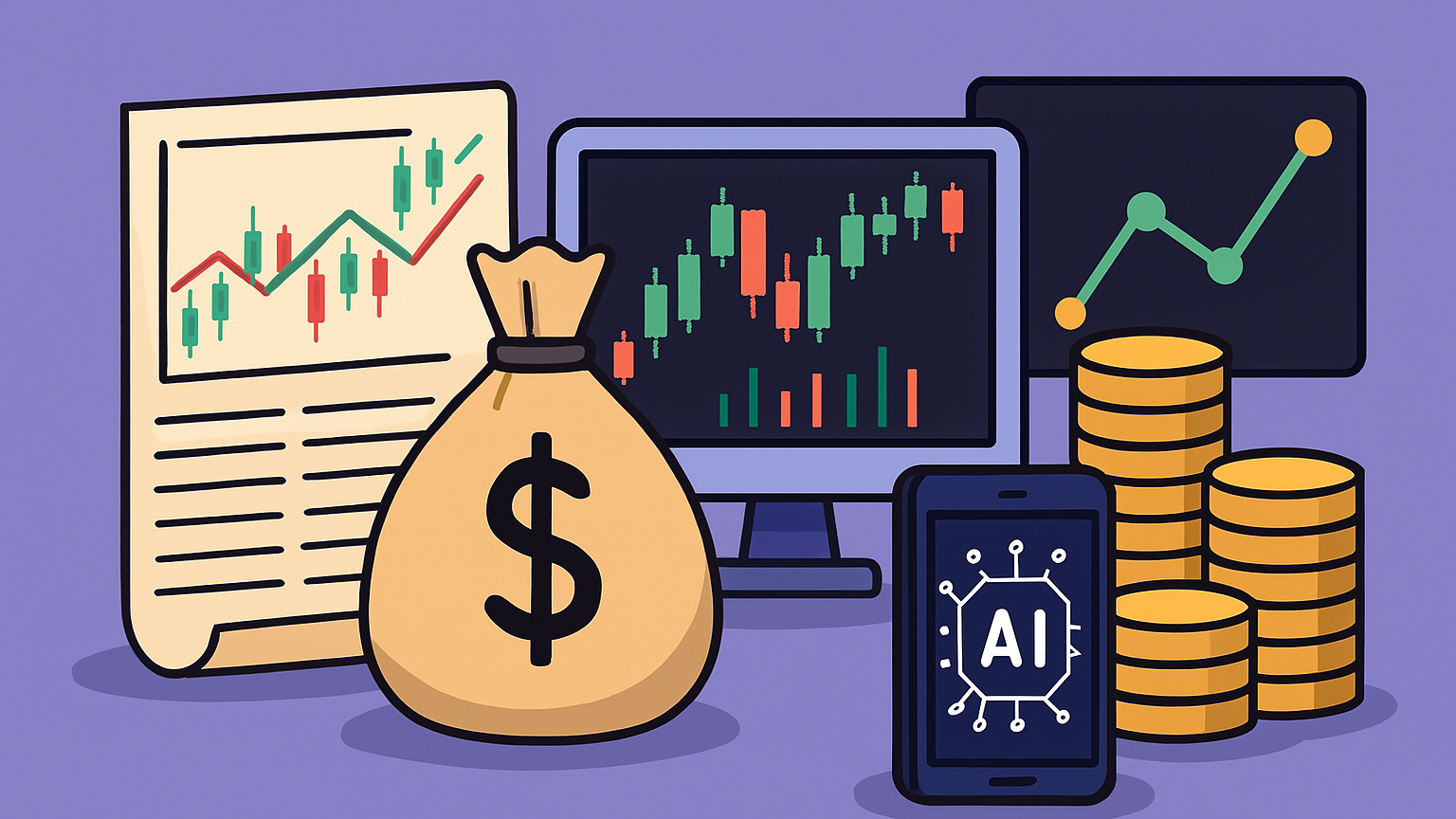Explore the nuances of secondary offerings, their types, impacts, and how they shape investment strategies in the market.
Secondary offerings are when a company or its shareholders sell shares after the IPO. These offerings can either dilute existing shares (new shares issued by the company) or not dilute shares (existing shareholders sell their shares). They impact stock prices, ownership, and market perception differently.
Key Takeaways:
-
Types of Offerings:
- Dilutive: New shares issued; ownership percentage decreases.
- Non-Dilutive: Existing shares sold; ownership percentages remain unchanged.
-
Investor Impact:
- Prices often drop due to dilution or market sentiment.
- Transparency about the use of funds can influence confidence.
-
Why Companies Do It:
- Raise funds for growth, pay off debt, or manage operations.
- Shareholders may sell for liquidity or portfolio diversification.
Quick Comparison:
| Aspect | Dilutive Offering | Non-Dilutive Offering |
|---|---|---|
| Shares Issued | New shares added | No new shares added |
| Ownership Impact | Reduces ownership percentage | No change in ownership percentage |
| Proceeds Go To | Company | Selling shareholders |
| Market Effect | Possible dilution, price drop | Sentiment-driven price movement |
Understanding secondary offerings helps investors assess risks and opportunities. Dive into the article for examples and strategies to evaluate these offerings effectively.
Secondary Offering vs Follow-On Public Offering: Understanding the Pros and Cons
2 Main Types of Secondary Offerings
Understanding the two types of secondary offerings can help you grasp their effects on companies and shareholders. Each has a unique impact on ownership and market dynamics.

Share Dilution Offerings
These occur when companies issue and sell new shares to raise funds. This increases the total number of shares available, reducing the ownership percentage of existing shareholders.
The funds raised through these offerings go directly to the company and can be allocated for purposes like:
- Funding business expansion
- Paying off debt
- Improving financial stability
- Managing operational costs
| Aspect | Impact on Company | Impact on Shareholders |
|---|---|---|
| Share Count | Increases total shares available | Reduces ownership percentage |
| Capital | Adds funds to the company | May decrease value per share |
| Balance Sheet | Improves financial position | Dilutes existing holdings |
| Market Signal | Suggests growth plans or funding needs | Could cause price fluctuations |
Non-Dilution Offerings
In non-dilutive offerings, existing shareholders sell their shares, and no new stock is issued. This means the total number of shares in circulation stays the same, maintaining the ownership percentages of other shareholders.
Here, the company doesn’t receive any of the proceeds. Instead, the selling shareholders benefit from the sale. For instance, in 2000, Goldman Sachs Group Inc. sold 40 million existing shares in a secondary offering, increasing its public float to 27%.
Non-dilutive offerings often reflect market sentiment:
- Insider sales might signal concerns about the company’s future.
- Strategic shareholders might sell to diversify their investments or address liquidity needs.
Next, we’ll dive into the offering process and how it influences the market.
Secondary Offering Process
Steps and Timeline
The secondary offering process involves coordination across various teams and can take several weeks or months. The exact timeline depends on market conditions and regulatory requirements.
-
Initial Planning and Documentation
Companies begin by preparing detailed documentation, including a registration statement for the SEC. This phase requires collaboration between company executives, legal teams, and investment bankers to decide on the offering's size and structure. -
SEC Registration and Review
The company files the registration statement with the SEC, which must be approved before any sales can occur. During this stage, the SEC reviews the company’s financial statements and business operations. -
Marketing and Pricing
Secondary offerings are usually marketed over a few days. This phase concludes with pricing discussions between the company and its underwriters.
These steps lay the groundwork for pricing strategies and the offering’s market reception.
Price Setting and Market Effects
Prices for secondary offerings are typically set slightly below the current market value to attract investors. This approach accounts for market conditions and potential dilution. For instance, Tesla’s 2020 secondary offering priced shares at a 4.6% discount to the previous closing price, encouraging investor participation.
Several elements influence pricing decisions:
| Pricing Factor | Impact on Offering |
|---|---|
| Market Conditions | Determines the level of discount needed |
| Company Performance | Shapes investor interest and perceived value |
| Offering Size | Affects supply and price dynamics |
| Timing | Influences market sentiment and reception |
Adhering to SEC compliance is a critical part of the process.
SEC Filing Requirements

Secondary offerings must meet stringent SEC regulations designed to protect investors. Key filings include:
- A registration statement outlining the offering terms
- A prospectus with detailed company information
- Disclosure of how the proceeds will be used
- Financial statements and reviews of business operations
Specialized legal and financial advisors assist companies in meeting these requirements. These rules apply to both purely secondary offerings (where existing shareholders sell) and mixed offerings (involving both the company and existing shareholders).
Market reactions often hinge on a company’s transparency about the offering’s purpose. For example, during Tesla’s 2020 secondary offering, Elon Musk reassured investors by explaining that the $2 billion raised would "strengthen the balance sheet and for general corporate purposes." This openness helped sustain investor confidence despite uncertain market conditions.
These steps and disclosures play a key role in shaping market perceptions and bolstering investor trust.
Analysis Guide for Investors
Company Motivations
Knowing why a company initiates a secondary offering can help investors make smarter decisions. These offerings are often used to raise money, pay off debt, or fund specific projects. Here are some common reasons:
| Motivation | Possible Impact on Investment |
|---|---|
| Debt Refinancing | May improve financial stability and lower interest costs |
| Capital Raising | Could support growth plans but might lead to share dilution |
| Tax Obligations | Typically helps shareholders cover taxes without affecting operations |
| Portfolio Management | Indicates a shift in strategy or active adjustments to holdings |
In 2023, 75% of secondary transaction volume was tied to active portfolio adjustments, while only 8% was driven by distressed or liquidity-pressured sellers. This highlights that many offerings are part of deliberate strategies. To dig deeper, investors should focus on specific metrics.
Analysis Metrics
To evaluate a secondary offering, focus on these financial indicators:
| Metric | What to Look For |
|---|---|
| Share Price Impact | Compare the offering price to historical closing prices |
| Dilution Effect | Check for changes in earnings per share (EPS) |
| Insider Activity | Analyze the timing and volume of insider sales |
| Use of Proceeds | Understand how the raised funds will be used and their potential return |
These metrics give a clearer view of the offering's implications. But investors should also weigh the risks against the potential rewards.
Risk vs. Reward Assessment
Market reactions to secondary offerings can vary widely depending on the company and market conditions. It's essential to consider both external sentiment and the company's intrinsic value.
Key factors that shape the risk-reward balance include:
| Risk Factors | Possible Benefits |
|---|---|
| Share price dilution | Could lead to reduced debt |
| Market sentiment impact | May fund strategic acquisitions |
| Timing of the offering | Could support research or development initiatives |
| Size of the offering | Might strengthen the company's overall financial position |
For example, in 2013, Mark Zuckerberg sold 41.35 million shares of Meta at $55.05 per share to cover a tax bill. This illustrates how understanding the reasons behind a secondary offering can clarify its potential impact on the market.
Example Secondary Offerings
Positive Outcomes
When planned and communicated effectively, secondary offerings can lead to strong market responses. Here are a few notable examples:
| Company | Offering Details | Market Response |
|---|---|---|
| Tesla (2020) | 2.65M shares at $767 (4.6% below market) | Maintained price stability with clear messaging |
| CRISPR (2018) | 5M shares | Stock price increased by 14% |
| Google (2005) | 14.16M shares at $295 | Raised approximately $4.17B |
These examples show how strategic planning and transparency can help companies achieve positive outcomes. However, not all secondary offerings go as smoothly.
Negative Outcomes
The market's reaction to a secondary offering can be influenced by several key factors, which, if mishandled, may lead to setbacks:
| Factor | Potential Negative Impact |
|---|---|
| Timing of Announcement | Announcing during poor market conditions can worsen reactions |
| Size of Offering | A large offering might suggest financial strain or overvaluation |
| Use of Proceeds | Vague or unclear intentions can lead to investor skepticism |
| Company Performance | Weak fundamentals often intensify price declines |
For instance, Peloton's $500 million secondary offering shortly after its IPO raised concerns about valuation and performance. The timing and market perception created challenges for the company.
Summary
Main Points Review
Secondary offerings and IPOs have distinct structures and effects, which are crucial for investors to understand. Here's a quick comparison to help clarify these differences:
| Aspect | Key Consideration | Impact on Investment Strategy |
|---|---|---|
| Offering Type | Dilutive vs. Non-dilutive | Influences ownership percentage and earnings per share (EPS). |
| Proceeds Use | Company vs. Shareholders | Indicates if funds are for growth or liquidity for current investors. |
| Market Timing | Market conditions and performance | Affects price stability and investor sentiment. |
| Purpose | Raising capital vs. liquidation | Highlights the company's strategic goals. |
These distinctions play a critical role in shaping investment strategies, as detailed below.
Investment Decision Guide
When analyzing secondary offerings, investors should consider the following factors:
Understanding the Company's Intentions
- Look into the stated purpose of the offering.
- Examine the company's current financial health.
- Consider how market conditions align with the timing of the offering.
Evaluating Key Metrics
- Compare the offering price to the current market value.
- Assess the potential dilution effect on existing shares.
- Review historical trading volumes for additional context.
Pay attention to both immediate and long-term market reactions. For instance, CRISPR Therapeutics saw its stock price jump nearly 14% after a five-million-share offering in 2018, showing how a well-handled secondary offering can benefit investors.







